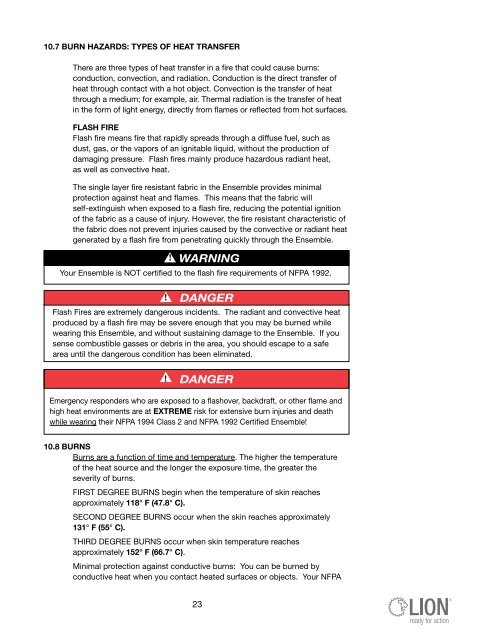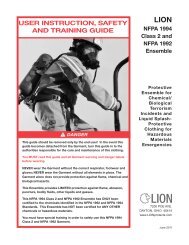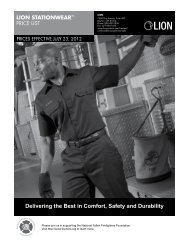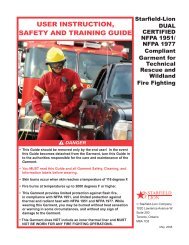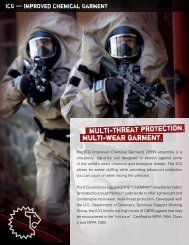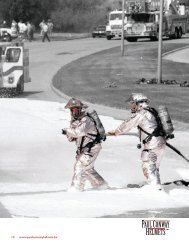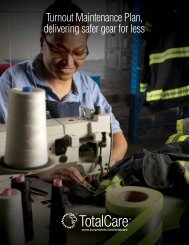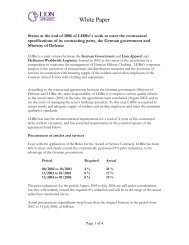Create successful ePaper yourself
Turn your PDF publications into a flip-book with our unique Google optimized e-Paper software.
10.7 BURN HAZARDS: TYPES OF HEAT TRANSFER<br />
There are three types of heat transfer in a fire that could cause burns:<br />
conduction, convection, and radiation. Conduction is the direct transfer of<br />
heat through contact with a hot object. Convection is the transfer of heat<br />
through a medium; for example, air. Thermal radiation is the transfer of heat<br />
in the form of light energy, directly from flames or reflected from hot surfaces.<br />
FLASH FIRE<br />
Flash fire means fire that rapidly spreads through a diffuse fuel, such as<br />
dust, gas, or the vapors of an ignitable liquid, without the production of<br />
damaging pressure. Flash fires mainly produce hazardous radiant heat,<br />
as well as convective heat.<br />
The single layer fire resistant fabric in the Ensemble provides minimal<br />
protection against heat and flames. This means that the fabric will<br />
self-extinguish when exposed to a flash fire, reducing the potential ignition<br />
of the fabric as a cause of injury. However, the fire resistant characteristic of<br />
the fabric does not prevent injuries caused by the convective or radiant heat<br />
generated by a flash fire from penetrating quickly through the Ensemble.<br />
WARNING<br />
!<br />
Your Ensemble is NOT certified to the flash fire requirements of NFPA 1992.<br />
! DANGER<br />
Flash Fires are extremely dangerous incidents. The radiant and convective heat<br />
produced by a flash fire may be severe enough that you may be burned while<br />
wearing this Ensemble, and without sustaining damage to the Ensemble. If you<br />
sense combustible gasses or debris in the area, you should escape to a safe<br />
area until the dangerous condition has been eliminated.<br />
! DANGER<br />
Emergency responders who are exposed to a flashover, backdraft, or other flame and<br />
high heat environments are at EXTREME risk for extensive burn injuries and death<br />
while wearing their NFPA 1994 Class 2 and NFPA 1992 Certified Ensemble!<br />
10.8 BURNS<br />
Burns are a function of time and temperature. The higher the temperature<br />
of the heat source and the longer the exposure time, the greater the<br />
severity of burns.<br />
FIRST DEGREE BURNS begin when the temperature of skin reaches<br />
approximately 118° F (47.8° C).<br />
SECOND DEGREE BURNS occur when the skin reaches approximately<br />
131° F (55° C).<br />
THIRD DEGREE BURNS occur when skin temperature reaches<br />
approximately 152° F (66.7° C).<br />
Minimal protection against conductive burns: You can be burned by<br />
conductive heat when you contact heated surfaces or objects. Your NFPA<br />
23


